
USDT Ağları Hakkında Bilmeniz Gereken Her Şey
Kripto para piyasasına dahil olduğunuzda, karşılaşacağınız ilk coinlerden biri USDT’dir. Onunla etkileşime girmeden önce, muhtemelen hangi blockchain ağında çalıştığını merak ediyorsunuzdur. USDT’nin 20’den fazla ağda çalıştığını biliyor muydunuz?
Bu makalede, USDT’nin desteklendiği en popüler 7 blockchain ağını ve bunların özelliklerini ayrıntılı bir şekilde anlatacağız.
USDT Nedir?
USDT (Tether) değeri ABD dolarına eşit olan bir stablecoin’dir. USDT’nin istikrarı onu kullanışlı bir ödeme yöntemi haline getirir. Ayrıca, birçok farklı blockchain üzerinde çalıştığı için sıkça ödeme aracı olarak tercih edilir. Farklı ağlara bağlı olması, USDT’yi kripto dünyasındaki en çok yönlü varlıklardan biri yapar, ancak aynı zamanda işlem sırasında kimliğin doğrulanmasını biraz karmaşık hale getirir.
Bu süreçleri kolaylaştırmak için USDT cüzdan adresleri geliştirilmiştir. Bunlar, belirli bir token’ı barındıran sembol ve rakamlardan oluşan benzersiz tanımlayıcılardır. Başka bir deyişle, bir token’ı yöneten akıllı sözleşmenin (smart contract) çalıştığı özel olarak tasarlanmış bir alandır. Dolayısıyla blockchain içinde USDT ile işlem yaptığınızda, bu akıllı sözleşmeyle adres aracılığıyla etkileşime girmiş olursunuz.
USDT Ağ Türleri
Daha önce belirttiğimiz gibi, USDT farklı blockchain ağlarında çalışır; bu yüzden farklı adreslere ve token standartlarına sahiptir. En popüler yedi USDT ağı şunlardır: Ethereum (ERC-20), TRON (TRC-20), Binance Smart Chain (BEP-20), Solana, Avalanche, Polygon ve Arbitrum.
Ethereum, BSC, Avalanche, Polygon ve Arbitrum üzerindeki USDT, "0x" ile başlayan Ethereum uyumlu (EVM) cüzdan adreslerini kullanır. Ancak her ağın kendine özgü USDT sözleşmeleri vardır; bu nedenle, işlem hatalarından kaçınmak için doğru ağı seçtiğinizden emin olmanız gerekir.
TRON ve Solana’daki USDT adresleri, EVM uyumlu ağlardakilerden farklıdır. Aşağıdaki tabloda bunlara daha yakından bakalım:
| Blockchain (Ağ) | Token Standardı | USDT Cüzdan Adresi Örneği | |
|---|---|---|---|
| Ethereum | Token StandardıERC-20 | USDT Cüzdan Adresi Örneği"0xdac17f958d2ee523a2206206994597c13d831ec7" | |
| TRON | Token StandardıTRC-20 | USDT Cüzdan Adresi Örneği"TVYg8rpibDoq93wo8tTcGtfSUKkjbV58eF" | |
| Binance Smart Chain | Token StandardıBEP-20 | USDT Cüzdan Adresi Örneği"0x55d398326f99059ff775485246999027b3197955" | |
| Solana | Token StandardıSPL | USDT Cüzdan Adresi Örneği"Es9vMFrzaC1H6zzggBqqEgakx4eCnmLmJtZNe5yW3sn" | |
| Avalanche | Token StandardıERC-20 | USDT Cüzdan Adresi Örneği"0xc7198437980c041c805a1edcba50c1ce5db95118" | |
| Polygon | Token StandardıERC-20 | USDT Cüzdan Adresi Örneği"0x3813e82e6f7098b9583FC0F33a962D02018B6803" | |
| Arbitrum | Token StandardıERC-20 | USDT Cüzdan Adresi Örneği"0xfd086bc7cd5c481dcc9c85ebe478a1c0b69fcbb9" |
USDT’nin bulunduğu blockchain çeşitliliği, onu yalnızca yaygın bir ödeme aracı yapmakla kalmaz, aynı zamanda DeFi ürünleriyle etkileşim için de uygun hale getirir. Bununla birlikte, daha önce USDT ile ödeme yapmamış kullanıcılar için bu kadar geniş ağ seçeneği kafa karıştırıcı olabilir. Bu nedenle, USDT’ye yatırım yapmadan önce her ağın özelliklerini göz önünde bulundurmak gerekir. Bu makalede, bunları sizin için detaylandırıyoruz.
Ethereum (ERC-20) Ağı
Ethereum, Bitcoin’den sonra ikinci en popüler kripto para olarak bilinir, ancak aynı zamanda bir blockchain ağıdır. İşte Ethereum üzerindeki USDT’nin sözleşme adresi: 0xdac17f958d2ee523a2206206994597c13d831ec7. Bu sadece bir örnektir; her coin’in adresi farklıdır. ERC-20 ağındaki USDT işlemlerinin onay süresi yaklaşık 1 ila 10 dakika arasında değişir ve ortalama işlem ücreti 1–3 dolar civarındadır.
Şimdi Ethereum (ERC-20) ağının özelliklerine ve artı-eksi yönlerine bakalım.
Ethereum (ERC-20) ağının avantajları:
-
ERC-20 token’ları birçok dApp, cüzdan ve borsa tarafından kullanılır.
-
Bu standart, özellikle merkeziyetsiz borsalarda yüksek likiditeye sahiptir.
-
Ethereum ağı, çok sayıda node’a sahip olduğu için en güvenli ağlardan biridir.
Ethereum (ERC-20) ağının dezavantajları:
-
Ağın ölçeklenebilirliği sınırlıdır, bu da işlemlerin yavaşlamasına neden olabilir.
-
İşlem ücretleri yüksektir.
TRON (TRC-20) Ağı
TRON ağında teknik standart TRC-20 olarak adlandırılır ve Ethereum’daki ERC-20 standardına benzerdir. İşte TRON üzerindeki USDT’nin sözleşme adresi: TR7NHqjeKQxGTCi8q8ZY4pL8otSzgjLj6t.
TRON (TRC-20) ağının avantajları:
-
TRC-20 kullanıldığında ağ ücretleri düşüktür, bu da onu kullanıcılar arasında USDT için en popüler standart yapar.
-
TRON ağı üzerindeki işlemler yüksek bant genişliği sayesinde çok hızlıdır; onay süresi yaklaşık 1 dakikadır.
-
Ağ aynı anda çok sayıda işlemi işleyebilir, bu da desteklenen dApp sayısının artmasına katkı sağlar.
TRON (TRC-20) ağının dezavantajları:
- Düzenleyici sorunlar: Birçok kişi, TRON’un yüksek düzeyde merkezileşmesini eleştirir; bu nedenle bazı ülkelerde veya platformlarda desteklenmeyebilir.
BSC (BEP-20) Ağı
Binance Smart Chain (BSC) ağı, Binance tarafından yüksek performanslı bir blockchain olarak geliştirilmiş ve Binance Chain ile birlikte çalışacak şekilde tasarlanmıştır. BSC, akıllı sözleşmeleri (smart contracts) kullanarak ağı çok yönlü bir platform haline getirir. USDT BEP-20’nin sözleşme adresi şu şekildedir: 0x55d398326f99059ff775485246999027b3197955.
BSC (BEP-20) ağının avantajları:
-
BSC, kripto köprüleri (crypto bridge) kullanılarak transfer edilebilen diğer blockchain’ler ve token’larla uyumludur.
-
BEP-20 token’larıyla yapılan işlemlerin ücretleri düşüktür; bu, ağın yüksek hızından kaynaklanır. Onay süresi genellikle 1–2 dakikadır.
-
Binance’in sağladığı destek, geliştiricilere kaynak sunar; bu nedenle BSC, DeFi alanında dApp’ler ve hizmetlerden oluşan bir ekosistemi aktif şekilde büyütmektedir.
BSC (BEP-20) ağının dezavantajları:
-
BSC’nin hızlı büyümesi nedeniyle birçok DeFi projesi bu ağa yönelmiştir, ancak bazıları hack saldırılarına uğramış ve bu durum genel ağ güvenliği için risk oluşturmuştur.
-
Binance’in güçlü desteğine rağmen BSC ağı ona oldukça bağımlıdır; platformun işleyişinde yapılan herhangi bir değişiklik, ağ ekosistemini doğrudan etkiler.
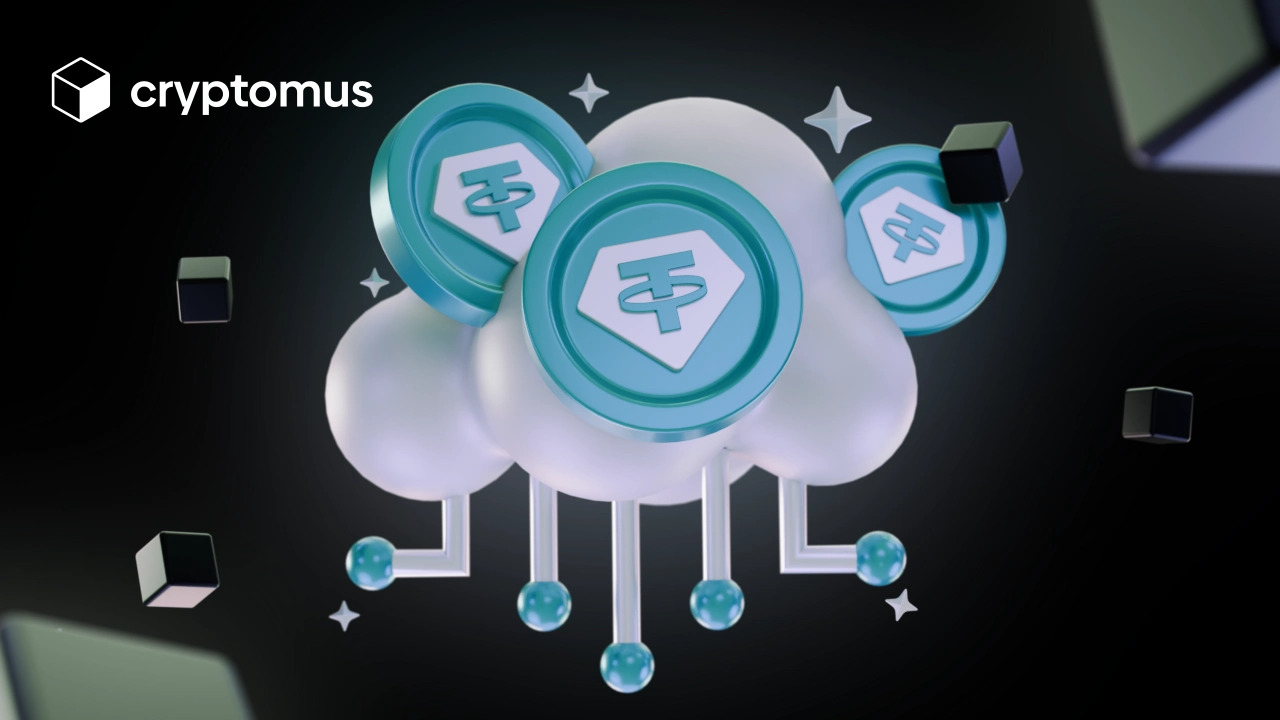
Solana (SPL) Ağı
SPL standardı, Solana blockchain’inde token’lar ve ağ yapılandırmaları oluşturmak için tasarlanmıştır. ERC-20’ye benzer, ancak Solana sistemi için daha verimli ve uygun maliyetli hale getirilmiştir. Örneğin, ağı güvence altına alan Proof-of-Stake (PoS) mekanizmasına ek olarak, Solana işlemleri düzenleyen Proof-of-History (PoH) sistemini de kullanır. Solana üzerindeki USDT’nin sözleşme adresi şu şekildedir: Es9vMFrzaC1H6zzggBqqqEgakx4eCnmLmJtZNe5yW3sn.
Solana (SPL) ağının avantajları:
-
Solana ağı, diğerlerine kıyasla çok yüksek bant genişliğine sahiptir; işlemler neredeyse anında, 3–5 saniye içinde onaylanır.
-
SPL token’larıyla yapılan işlemlerin ücretleri minimum düzeydedir, bu nedenle kullanıcılar tarafından sıkça tercih edilir.
-
Solana ekosistemi, çeşitli dApp hizmetleriyle entegre çalışır ve DeFi, NFT ve oyun alanlarında hızla büyümektedir.
Solana (SPL) ağının dezavantajları:
-
Solana ağı geçmişte birkaç kez gecikme ve kesinti yaşamıştır; bu da bazı kullanıcılar için endişe kaynağı olmuştur.
-
Kullanıcılar arasında düşük bir popülerlik ve talep seviyesine sahiptir.
Avalanche (ERC-20) Ağı
Avalanche ağındaki USDT token’ı, üç ana zincirden biri olan C-Chain üzerinde çalışır. Bu zincir akıllı sözleşmelerle çalışmak üzere tasarlanmıştır ve Ethereum’un özellikleriyle tamamen uyumludur. Avalanche ağındaki USDT C-Chain token’ı şu sözleşme adresinde çalışır: 0x9702230A8Ea53601f5cD2dc00fDBc13d4dF4A8c7.
Avalanche (ERC-20) ağının avantajları:
-
Ağ, yüksek bant genişliğine sahiptir ve saniyede çok sayıda işlem yapılmasına olanak tanır; bu nedenle yüksek hacimli işlemler için uygundur.
-
C-Chain işlemlerindeki ağ ücretleri düşüktür, hatta talebin yoğun olduğu dönemlerde bile.
-
Ağ, diğer blockchain’lerle etkileşime girebilen yapıya sahiptir, bu da akıllı sözleşmelerin ağlar arasında taşınmasına izin verir.
Avalanche (ERC-20) ağının dezavantajları:
-
Avalanche, yüksek enerji tüketimi nedeniyle çevre üzerinde olumsuz bir etki yaratır.
-
Popülerliği nedeniyle ağ yoğunluk yaşayabilir, bu da işlem onaylarının yavaşlamasına yol açabilir.
Polygon (ERC-20) Ağı
Polygon ağı, Ethereum’un ikinci katman (Layer-2) ölçeklendirme ve maliyet verimliliği çözümüdür. Ethereum uyumlu blockchain ağlarını oluşturur ve birbirine bağlayarak optimize edilmiş dApp’ler geliştirir. Bu ağ üzerindeki USDT token’ları şu sözleşme adresinde çalışır: 0xc2132d05d31c914a87c6611c10748aeb04b58e8f. Bu yalnızca bir örnektir; her token’ın adresi farklıdır.
Polygon (ERC-20) ağının avantajları:
-
Polygon’da işlemlerin onaylanması hızlıdır; bu, özellikle oyun ve ticaret alanlarında avantaj sağlar.
-
Ağ, hem Ethereum güvenliğini hem de kendi güvenlik önlemlerini kullanarak ERC-20 işlemleri için güvenli bir ortam sağlar.
-
Polygon, yalnızca Ethereum ağıyla değil, diğer ağlarla da zincirler arası uyumluluğa sahiptir.
Polygon (ERC-20) ağının dezavantajları:
-
Ethereum ağı Polygon’a bazı avantajlar sağlasa da, tıkanıklık ve yüksek ücretler gibi Ethereum’daki sorunlar Polygon’u da etkileyebilir.
-
Ağın hızlı büyümesi, benzer hizmetler sunan projelerin çoğalmasına neden olarak kullanıcıların kafasını karıştırabilir.
Arbitrum (ERC-20) Ağı
Arbitrum ağı, Ethereum’u ölçeklendirmek için geliştirilen bir diğer Layer-2 çözümüdür. Amaç, hız artışı sağlamak ve maliyetleri düşürmektir. Ağ, işlemleri zincir dışında (off-chain) işleyip veri miktarını azaltmak için "Optimistic Rollups" teknolojisini kullanır. Arbitrum (ERC-20) üzerindeki USDT şu sözleşme adresinde çalışır: 0xfd086bc7cd5c481dcc9c85ebe478a1c0b69fcbb9.
Arbitrum (ERC-20) ağının avantajları:
-
Arbitrum ağı yüksek bant genişliğine sahiptir; bu da işlem hızını artırır ve daha karmaşık dApp’leri destekler.
-
Ethereum ağına kıyasla Arbitrum, düşük gas ücretleri sunar ve büyük ölçekli işlemler için uygun maliyetli bir ekosistem oluşturur.
-
Bu ağ DeFi alanında aktif olarak kullanılmakta ve birçok protokol ve uygulama, ağ içinde yayılıp yeteneklerini artırmaktadır.
Arbitrum (ERC-20) ağının dezavantajları:
-
Ağ altyapısı, Layer-2 çözümlerine yeni başlayanlar için karmaşık görünebilir; bu da öğrenme süresini uzatabilir veya kullanımdan vazgeçmeye neden olabilir.
-
Arbitrum’daki para çekme işlemleri, dolandırıcılık kontrollerinin uzunluğu nedeniyle genellikle bir haftaya kadar gecikebilir.
-
Ethereum için geliştirilmiş yenilikçi bir çözüm olmasına rağmen, Arbitrum ağı Ethereum’a bağımlıdır ve orada ortaya çıkan sorunlardan etkilenir.
USDT Transferi İçin En İyi Ağ
USDT transferi için hangi ağın en iyi olduğunu mu merak ediyorsunuz? Seçim tamamen sizin tercihlerinize bağlıdır. Hız, işlem maliyeti ve ağ güvenliğine göre karar vermelisiniz.
Örneğin, düşük ücretler sizin için önemliyse TRON, BSC, Solana, Arbitrum veya Polygon’u tercih edebilirsiniz. İşlemlerin hızlı gerçekleşmesini istiyorsanız TRON, BSC, Solana ve Polygon da en uygun seçeneklerdir. Güvenliğe öncelik veriyorsanız en iyi seçim Ethereum olacaktır.
Her USDT blockchain’inin kendine özgü avantajları ve dezavantajları vardır. Bu yüzden, bir ağla çalışmadan önce özelliklerini dikkatlice incelemeniz gerekir. Umarız bu rehberimiz, ağlar arasındaki temel farkları anlamanıza yardımcı olmuştur ve artık USDT ile çalışmak için hangi ağı seçeceğiniz konusunda daha emin hissediyorsunuzdur.
Makaleyi değerlendirin
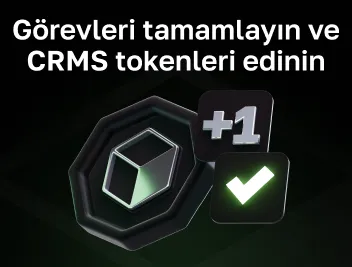
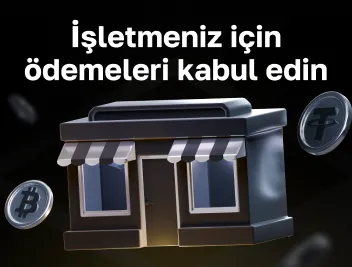
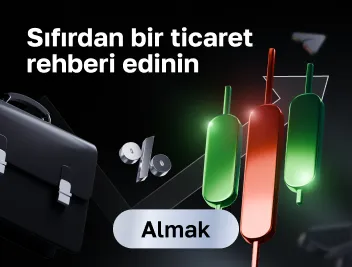
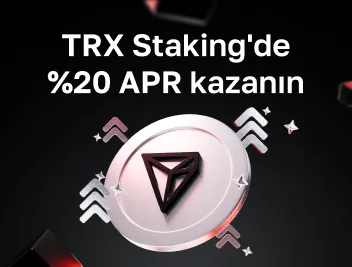
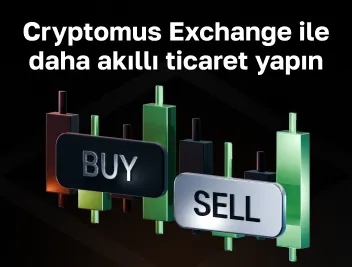



yorumlar
0
Yorum yazmak için giriş yapmış olmalısınız